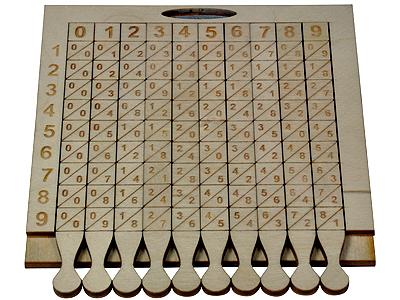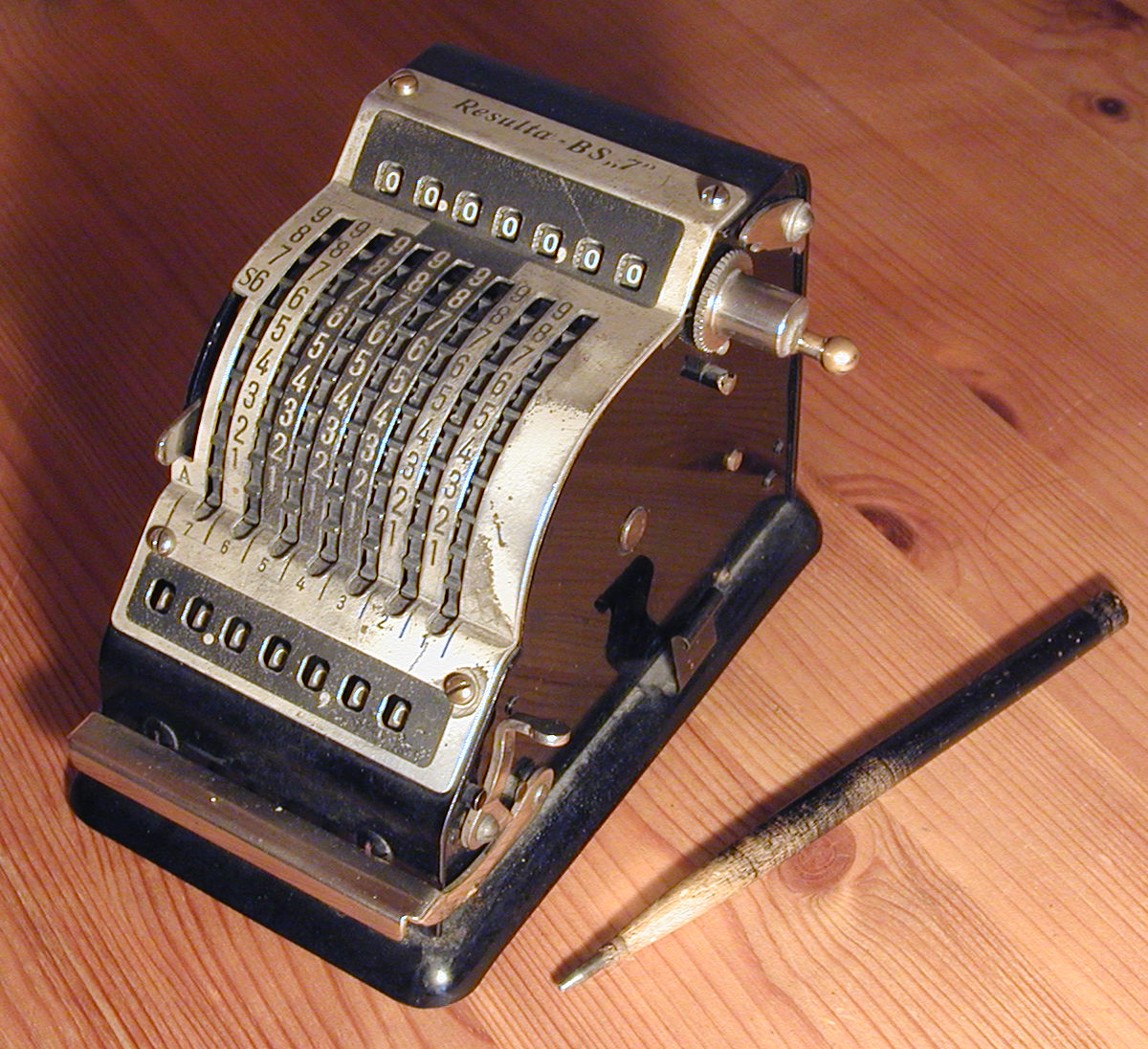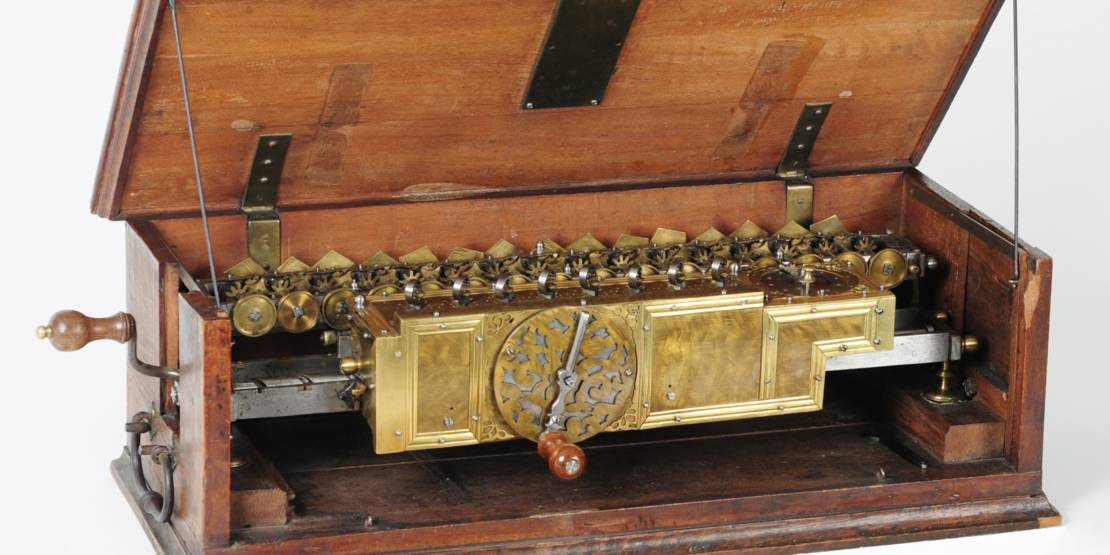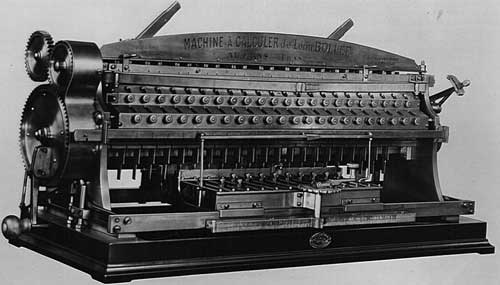Evolution and Introduction of Computer
Definition:- Computer is an electronic machine that provides desired information by acting on data according to the commands and instructions given by the user.
Or
A computer is a fast computing machine that can perform any number of mathematical calculations as well as logical operations.
Advantage of computers
A computer has the following advantage over human being. Main features of computer is given below.1- Speed:- Computer can do any work at a much faster speed than human. A normal computer can do work in 1 millionth of a second.
2- Storage Capacity:- Computer can store a large number of data. The stored information can be retrieved even after years with the same accuracy.
3- Accuracy:- The accuracy of the events done by the computer is much higher than the events done by the human. Computer gives wrong result only if there is an error in its algorithm or wrong data is given as data input.
4- Comprehensiveness: - Computer can easily do many types of tasks with efficiency.
5- Automation: - After inputting the data into the computer and giving necessary instructions, it automatically starts and completes the work.
6- Efficiency:- Computer can do any work continuously in any environment without stopping.
7- Reliability:- If we do not give wrong input, then 100% correct result is obtained by the computer.
8- Multiple uses: - Computers can be used from daily life to scientific work as per the requirement.
Limitations of Computer
Along with the merits of the computer, there are still some drawbacks in the computer which are as follows.
2- Lack of self-defence:- Computer harassed is not able to defend itself.
3- Intelligence: - Computer cannot take any decision automatically, it works on the instructions given by us.
Use of Computers
Computers are being used in every sector of the society in the present time. The main areas of use of computers are as follows.
- In the field of education
- In the field of medicine
- In the field of information technology
- In the field of railway and air reservation
- In the field of banking
- In the field of medicine
- In the field of weather forecasting
- Making cartoon and animation films
- In different laboratories
- In the area of Traffic control
History of Computer's
Computer is a complex and very useful machine. The development of this machine did not take place as it is visible to us today. Many machines have contributed significantly to the development of computers. A computer is a complex machine celebrated by continuous and useful improvements to the machines that have been developed. The main machines that contributed to the development of computers are as follows.
1- Abacus: - Abacus was built in 4000 BC in China. Abacus is a rectangular structure with 10 rods. Each rod has 7 beads. These beads can be moved up and down. There is a strip dividing these rods from the middle, which is called divider. The upper part of the divider is called Heaven and the lower part of the divider is called Earth. Heaven has two pearls while Earth has 5 pearls.
2- Napier Bones: - In the year 1617 AD, the Scottish mathematician John Napier created rectangular strips made of some such bones on which numbers were inscribed. The number of rectangular strips was 10. With the help of these rectangular strips, it could be done logarithmically and easily. With this machine, the operations of addition, subtraction, multiplication and division could be done easily.
3- Slide Rule: - In the year 1621, the slide rule was invented by William Oughtred. It is also called the first Analog computer. By this the operations of multiplication and division can be done with the help of small mathematical tables. It consists of two marked bars, which were kept equal and slid back and forth.
4 Edging Machine:- In the year 1642, French mathematician Blaise Pascal invented the Adding Machine. This machine had many toothed wheels and dials. Each chakra consisted of 10 parts, which were interconnected in such a way that if a wheel rotated once, then the circle on its left side would rotate 1/10th. Numbers could be added and subtracted by this machine.
5 Leibniz calculator :- German philosopher and mathematician Gottfried Leibniz invented the reckoning machine in 1672 by improving the edging machine. With the help of this machine, the operations of addition, subtraction, multiplication and division could be done.
6
Multiplying Machine:- French engineer Thomas de Colmar developed the
multiplying machine in the year 1820. It was a mechanical calculator
that could perform the operations of addition, subtraction,
multiplication and division very quickly.
7
Jaccard Loom:- In 1801, the French weaver Jaccard Loom created a
machine that automatically gave designs or patterns in clothes. The
specialty of this machine was that it used punch cards perforated on
card board to insert designs into weaving. This machine gave rise to
a new idea that information can be stored in machines which proved to
be very useful in the development of computers.
8 Difference Engine: - This machine was invented by the English mathematician Charles Babbage in 1820 AD. He made and printed mathematical tables with the help of punch cards. Gear and soft were used in this machine and it used to run smoothly. This machine was never fully built due to paucity of funds.
9 Analytical Engine:- This machine was invented by the English mathematician Charles Babbage in 1833 AD. In fact, he designed this machine which was similar to today's modern computers. This machine built by him was capable of performing many types of mathematical phenomena as well as logical operations. This machine too could not be fully built due to lack of funds. On the basis of the same principle used in this machine, modern computers were developed in the future, hence Charles Babbage is also called Father of Modern Computer.
11 Mark 1:- Mark 1 was invented in 1944 AD by 4 engineers of IBM under the leadership of Hubbard Aiken. The full name of this machine was called Askew Automatic Sequence Controlled Calculator. Later its name was changed to Mark One. It was the world's first electro-electronic computer.
The development of digital computers is classified into the following 5 generations. This classification has been done on the basis of the hardware and technology used in the computer.
1- First generation :- Vacuum bulb (vacuum tube) was used in this generation of computers. The term of this generation is considered to be from 1945 to 1955. The first computer of this generation is ENIAC ( ELECTRONIC NUMERIC INTEGRATOR AND CALCULATOR). On the basis of ENIAC, John von Neumann made a new computer which was named von Neumann machine. The design used in modern digital computers is based on the John Neumann machine. Other major computers of this generation are EDSAC ( ELECTRONIC DELAY STORAGE AUTOMATIC CALCULATOR), EDVAC ( ELECTRONIC DISCRETE VARIABLE AUTOMATIC COMPUTER), UNIVAC (UNIVERSAL AUTOMATIC COMPUTER) etc.
Features of first generation computers
- It used to be very big.
- Vacuum tubes were used in this generation of computers.
- The speed of these computers was very low and they were not very reliable
- Binary language was used in computers of this generation.
2- Second generation computers: - In this generation computers, transistors were used in place of vacuum tubes. The transistors were smaller and better in size than the vacuum tube. Therefore, even after using a large amount of vacuum tubes in the second generation computers, their size was smaller than that of the first generation computers. The major computers of this generation were NCR 304, IBM 1602, PDP1 UNIVAC 1107 etc.
Features of second generation computers
- These computers were smaller than the first generation.
- The speed and storage capacity of the computers of this generation was more than the computers of the first generation.
- These computers were more reliable than the first generation.
- High level languages FORTRAN, ALGOL etc. were used in this generation of computers.
3- Third generation computers :- In this generation computers, integrated circuit IC ( INTEGRATED CIRCUIT) was used in place of transistors. The time of this generation is considered to be from 1964 to 1980. The major computers of this generation are PDP-8, CRAY-1, IBM-360, PDP-11.
Features of third generation computers
- These computers were smaller and more reliable than the first and second generation computers.
- These computers could store a greater amount of information than the first and second generation computers.
- Keyboard was used in computers of this generation.
- Many other modern languages, including BASIC, were used in computers of this generation.
- 5These computers were cheaper than the first and second generation computers.
4- Fourth Generation Computers:- In this generation computers I.C. Where is the L.S.I. ( LARGE SCALE INTEGRATED CIRCUIT ) was used. The term of this generation of computers is considered to be from 1980 to 1985. The major computers of this generation are IBM PC/AT, CRAY-2, IBMPC etc.
Characteristics of fourth generation computers :-
- Computers of this generation were smaller and more reliable than the first, second and third generation computers.
- The speed and storage capacity of these computers was also high.
- Modern computer languages were used in these.
- Mouse, scanner, printer etc. were also used in this generation computer.
5- Fifth Generation Computers :- The fifth generation of computers is being considered since 1985 till now. Efforts are being made to develop this generation of computers in such a way that their functionality was like machines, their intelligence is better than humans. The present age is called the digital age because of the increasing influence of computers in every walk of life. Efforts are on to equip future developed computers with artificial intelligence so that they can make their own decisions without our instructions.
Classification of computers
Computers can be classified on the following three basis.
- Based on purpose
- Depending on size
- Based on technology
1. Classification of Computers on the Basis of Purpose
Computers are classified into the following three classes on the basis of their purpose.
- Special purpose computer
- General purpose computer
- Mechanical purpose computer
1. Special Purpose Computer :- Those
computers which have been designed keeping in mind only one
particular purpose are called Special Purpose Computers. These types
of computers are used in the field of medical science meteorology
robotics etc.
2. General purpose computer :- This type of
computer is used to perform common tasks. The computers used in our
homes, educational institutions, offices, banks etc. are general
purpose computers.
3. Mechanical purpose computer :- The
computer with the help of which the machines are controlled is called
mechanical purpose computer.
2. Classification of computers on the basis of size
On the basis of size, computers can be divided into the following 4 classes.
- microcomputer
- mini computer
- mainframe computer
- super computer
1.Microcomputer:- Such
computers in which microprocessor is used are called microcomputers.
This computer is very small in size and can be used
easily.
Microcomputers can also be divided into the following
three classes.
- Desktop Computers
- laptop computer
- poptap computer
2. Mini computer:- Mini computers are more
powerful than microcomputers but less powerful than mainframe
computers. Their processing capacity, speed and data storage capacity
are equal to many microcomputers. Microcomputers are used at places
like banks, railway reservation centers, stock exchanges, etc.
3.
Mainframe Computer :- Mainframe computer is more powerful than
computer and less powerful than super computer. Their capacity is
equal to that of many mini computers. Mainframe computers are more
reliable than mini computers, easy to fail and more secure in data.
They are used in places like business organization, stock market etc.
The major mainframe computers are IBM 3000, IBM 4181 etc.
4.Super
Computer:- Supercomputer is the most powerful computer in the world.
They are larger in size and complex in structure than ordinary
computers. It has the ability to perform hundreds of billions of
calculations in a second. Supercomputers are used in the fields of
space science, evidence science, meteorology, geophysics etc.
Supercomputers are available with only a few major countries of the
world. India also has many supercomputers of the Param Unnao
series.
3.Classification of Computers on the basis of Technology
On the basis of technology, computers can be classified into the following three major classes.
- Analog computer
- Digital computer
- Hybrid computer
1.Analog
Computer:- Computers in which physical quantities are converted into
electromagnetic signals with the help of electronic circuits. They
are called Analog computers. These computers work on the basis of
comparison.
2.Digital Computer :-Digital Computer:- The
computers which take numbers or figures as input and act on them to
give numbers as output data are called digital computers. Digital
computers work on the principle of computation. We do. Their results
are more reliable.
3-Hybrid Computer :- Those computers
which have a mixture of the properties of both the analog to digital
computers are called hybrid computers. Hybrid computers are used to
perform special types of events under special conditions.








/cdn.vox-cdn.com/assets/1811877/differenceengine.png)





Very helpful for my study
ReplyDelete